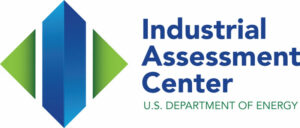by Liz Stevens, writer, Plastics Business
 The US Department of Energy, through its Industrial Assessment Centers (IACs), offers no-cost expert assessments to small- and medium-sized manufacturers. The assessments are conducted by teams at 31 universities around the US, and result in reports with detailed recommendations. Here are the top five things to know about this valuable US DOE program.
The US Department of Energy, through its Industrial Assessment Centers (IACs), offers no-cost expert assessments to small- and medium-sized manufacturers. The assessments are conducted by teams at 31 universities around the US, and result in reports with detailed recommendations. Here are the top five things to know about this valuable US DOE program.
The offer
Since 1976, the DOE has offered no-cost, site-specific expert assessments and analyses to manufacturers. The program is aimed at improving energy efficiency, reducing waste and increasing productivity, by making recommended changes to processes and equipment. More than 18,000 assessments have been completed.
Manufacturers may contact an Industrial Assessment Center (formerly called Energy Analysis and Diagnostic Centers) at a participating university in their region to explore the assessments, analyses and resulting reports. IACs at these universities train the next-generation of energy-savvy engineers, more than 60% of whom pursue energy-related careers upon graduation. IAC assessments are conducted by engineering faculty along with upperclass and graduate students.
For qualified manufacturers, a remote survey of the plant will take place, after which an IAC team will arrive for a one- to two-day on-site visit. The team will later perform detailed analyses of the site’s specifics and make recommendations in a confidential report with estimates of costs, performance and payback times. The IAC team will follow up to learn which recommendations have been implemented.
The criteria
Manufacturers can contact the closest IAC location to explore or initiate an assessment if they meet these criteria:
- Within Standard Industrial Codes (SIC) 20-39
- A US manufacturer located less than 150 miles from a participating university
- Gross annual sales below $100 million
- Fewer than 500 employees at the plant site
- Annual energy bills more than $100,000 and less than $2.5 million
- No professional in-house staff to perform the assessment
IAC locations are spread across the continental US. IAC locations in the West are located in Colorado, Oregon, California, Arizona, Idaho and Utah. In the South, IACs are found in Texas, Oklahoma and Louisiana. IACs in the Midwest are in Ohio, Wisconsin, Indiana, Illinois, Missouri and Nebraska. In the Southeast, IACs are in Georgia, Florida, Tennessee, Kentucky, Alabama, North Carolina and South Carolina. For the Northeast region, IACs are located in Delaware, Massachusetts, Pennsylvania, New York and West Virginia.
Assessments in the plastics industry
The 2020 assessment conducted by the IAC Center at the University of Nebraska-Lincoln for a Missouri-based plastic bottle manufacturer with a 144,400 sq. ft. footprint presented the plant with a roadmap to recommended actions worth $113,000 in annual savings. The list of recommendations included utilizing a less expensive cooling method, using higher-efficiency lamps and/or ballasts, improving air circulation with destratification fans or other methods, eliminating leaks in inert gas and compressed air lines/valves, installing compressor air intakes in the coolest locations, and using or replacing hardware with energy-efficient substitutes.
Case Western Reserve University’s IAC conducted an assessment in 2020 for a 23,000 sq. ft. Michigan company involved in mold design, tooling construction and plastic injection molding. The recommendations totaled nearly $10,000 for yearly savings actions, including installing compressor air intakes in the coolest locations, upgrading controls on compressors, recovering and reusing cooling water and utilizing daylight whenever possible in lieu of artificial light.
The top five recommendations
In 2020, for SIC codes 3085 (plastics bottles) and 3544 (special dies, tools, jigs & fixtures), these recommendations were made most frequently:
- Eliminate leaks in inert gas and compressed air lines/valves (This is a biggie – it appears in the top five recommendations for 2020 for all SIC codes.)
- Utilize higher efficiency lamps and/or ballasts
- Use the most efficient type of electric motors
- Analyze flue gas for proper air/fuel ratio
- Reschedule plant operations or reduce load to avoid peaks, which tied with
- Insulate bare equipment
The database
The IAC database is available for exploration by anyone interested in seeing the contours of assessments and recommendations. As of June 2021, the database contained 19,427 assessments and 146,971 recommendations.
The database can be searched by assessment particulars (industry type, size, year, energy costs, products), by recommendations (type, savings, cost, implementation status) and by industry type (SIC or NAICS code).
For more information about the DOE Industrial Assessment Centers and their no-cost\ assessments, visit https://www.energy.gov/eere/amo/industrial-assessment-centers-iacs.




